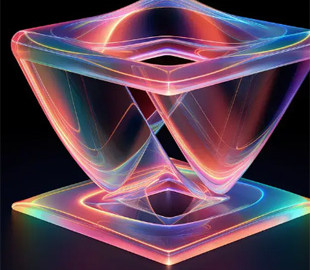
Relying on modern holographic technologies, a team of optical display experts invented a way to improve 3D displays.
Researchers invented a device , which is small enough to fit inside a regular pair of glasses, and could solve the age-old problem of holographic displays, resulting in the most realistic holograms ever.
Holograms are usually created using projection devices , which are called spatial light modulators (SLM). Light is emitted through the device so that it changes the shape of the light wave at a certain distance, creating a visible surface.
But since SLMs are based on liquid crystal/silicon (LCoS) technology, current hologram technology is suitable for narrow fields of view, such as a flat screen or a small viewing area (ie a small object). The viewer must be inside a narrow viewing angle — anywhere outside it diffracts too much light, making it invisible.
It is possible to widen the angle at which the image will be sharp, but there is a loss of accuracy because current LCoS technology does not have enough pixels to support the image in a wider field. This means that holograms tend to be either small and sharp, or large and blurry, and sometimes disappear altogether if the viewer looks in a different direction, far enough away from the angle at which they are seen.
The new technology could result in more detailed holograms regardless of which way the viewer is looking or how quickly they change direction. The hardware needed to design them is so small and light that users don't need tools like bulky virtual reality headsets.
Display technology can be easier to use, lighter and ultra-thin — from getting directions while driving to assisting in surgery and even seeing instructions on how to fix a leaking pipe.
The Princeton team's key innovation was the creation of a second optical element that works with SLM , filtering its output to expand the field of view while maintaining the detail and stability of the hologram with significantly less degradation in image quality.
The device, described as a small piece of frosted glass, has an etched pattern that diffuses the light of an SLR camera in frequency ranges that are not perceived by humans. This improves image quality and expands the field of view.
The trade-off between image quality and field of view has been the biggest obstacle to creating realistic holograms, but this research brings scientists closer to solving this problem.< /p>

